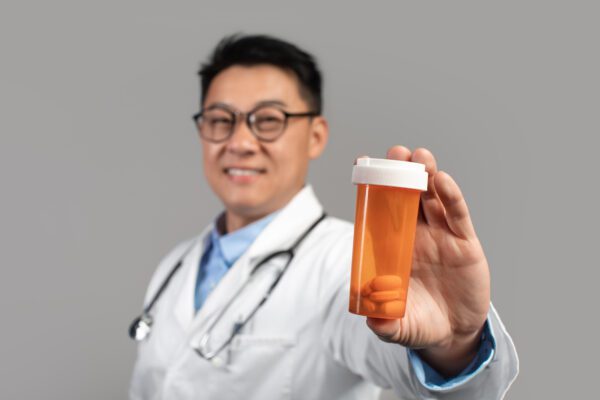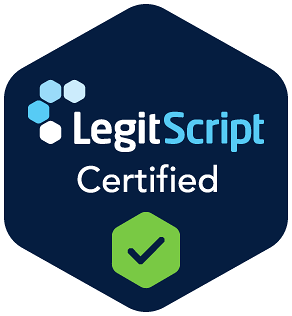Benefits of TMS Therapy
Transcranial Magnetic Stimulation (TMS) therapy is gaining recognition as an effective treatment option for those struggling with addiction. In this section, we will explore the effectiveness of TMS therapy and the benefits of its personalized treatment approach, helping us understand why it can be a key component in addiction recovery.
Effectiveness of TMS Therapy
TMS therapy is a noninvasive procedure that utilizes magnetic fields to stimulate nerve cells in the brain, primarily aimed at improving symptoms related to major depression. It has become an essential option for individuals who have not found success with traditional treatment methods, such as medication. With an FDA approval, TMS offers hope for those facing challenges in their recovery journey.
Clinical studies indicate that TMS therapy has a significant success rate, particularly among individuals with major depressive disorder who have previously struggled with treatment options. Approximately 60% of patients experience a reduction in depressive symptoms, while nearly 40% achieve full remission. This level of effectiveness positions TMS as a vital resource for our loved ones battling addiction, allowing for emotional healing that aids in the recovery process.
Personalized Treatment Approach
One of the standout features of TMS therapy is its personalized treatment approach. During the initial evaluation, factors such as a patient’s medical history and specific symptoms are thoroughly reviewed. This comprehensive assessment allows treatment to be tailored to fit individual needs, thus enhancing the likelihood of a successful outcome.
TMS therapy is performed on an outpatient basis, providing us flexibility to schedule treatment sessions that fit our personal routines. This convenience reduces disruptions to work and family obligations while allowing individuals to gain the benefits of treatment without prolonged absences. Not only does this personalized approach address the unique challenges faced by individuals in recovery, but it also provides ongoing support through therapeutic continuity, which contributes to sustained success in overcoming addiction.
Our commitment to ensuring effective and compassionate care emphasizes the significant role TMS therapy can play in addiction recovery. For additional therapeutic options to complement TMS, we offer various programs, including cognitive behavioral therapy, group therapy addiction, and individual therapy, all designed to support the recovery journey.
Understanding TMS Procedures
Transcranial Magnetic Stimulation (TMS) therapy is a powerful tool in our approach to treating various mental health conditions, particularly in the realm of addiction recovery. Understanding the procedures involved in TMS can help us choose the best paths for healing.
FDA-Approved TMS Conditions
TMS therapy has received FDA approval for several conditions, affirming its effectiveness in mental health treatment. The primary FDA-approved conditions for TMS therapy include:
| Condition | Description |
|---|---|
| Major Depression | Used when other treatments have been ineffective. |
| Obsessive-Compulsive Disorder (OCD) | FDA-approved for treatment after standard options fail. |
| Migraines | Approved as a treatment for migraine disorders. |
| Smoking Cessation | Used to aid in quitting smoking when other methods have failed. |
These conditions highlight the versatility of TMS in addressing complex mental health issues, which can significantly impact addiction recovery.
Different TMS Techniques
Within the realm of TMS therapy, several techniques are utilized, each serving unique purposes in treating conditions effectively.
-
Repetitive Transcranial Magnetic Stimulation (rTMS): This technique involves delivering repetitive magnetic pulses to stimulate nerve cells in the brain. It is commonly used in treating depression, OCD, and assisting with smoking cessation.
-
Deep TMS: Utilizing a different coil design, deep TMS penetrates deeper and wider areas of the brain compared to rTMS. It has FDA approval for OCD and smoking cessation, making it a valuable option for more comprehensive treatment (Mayo Clinic).
-
Non-invasive Nature: Both rTMS and deep TMS are non-invasive, requiring no anesthesia, and can be performed on an outpatient basis. This flexibility makes them accessible options for individuals seeking treatment (Mayo Clinic).
By understanding these procedures, we can better appreciate how TMS therapy contributes to drug and alcohol addiction treatment programs at Totality Treatment. The FDA-approved conditions and techniques provide sound alternatives for those who have not found relief through traditional methods, paving the way for more effective recovery options. For more information on therapeutic approaches, consider exploring individual therapy or group therapy addiction.
Safety of TMS Treatments
When considering TMS therapy outpatient for addiction treatment, understanding the safety measures and potential side effects is crucial for making informed decisions.
Seizure Risk and Precautions
The most severe risk associated with Transcranial Magnetic Stimulation (TMS) is a seizure, which occurs in only 0.01% of cases, or approximately 1 in 10,000 procedures. Seizures may be triggered during the procedure itself and are more likely to happen in individuals with existing conditions such as brain lesions or epilepsy.
To minimize the risk of seizures, proper screening is essential. This includes evaluating the patient’s medical history and adjusting the dosage according to individual motor thresholds. Following a timeout procedure for verification can also enhance safety. Seizures are infrequent, with a rate of about 0.08 per 1000 sessions. Monitoring patients closely during the initial TMS sessions is critical, especially if there are clinical changes or adjustments to their medication.
Common Side Effects
While TMS treatment is generally considered safe, patients may experience some common side effects. These side effects are typically short-lived and can include:
| Common Side Effects | Description |
|---|---|
| Headache | Mild headaches can occur following treatment, but they usually resolve quickly. |
| Scalp Discomfort | Patients may feel slight discomfort on the scalp during or after the procedure. |
| Facial Twitching | Some individuals may experience minor muscle twitches, which are not considered serious. |
In clinical trials that led to the FDA approval of TMS, the tolerability was remarkably high, with less than 5% of patients discontinuing treatment due to adverse effects (NIMH). Severe side effects such as psychiatric worsening or significant central nervous system alterations are rare, and cognitive safety assessments indicate no lasting cognitive effects from TMS treatment.
Understanding the safety profile of TMS therapy can help reassure those considering it for addiction treatment, allowing individuals to focus on the healing process with confidence. Explore additional supportive therapies, such as cognitive behavioral therapy or group therapy addiction, to complement the TMS treatment.
TMS Therapy Sessions
Treatment Frequency and Duration
TMS therapy, or transcranial magnetic stimulation, typically involves sessions that last less than an hour. We often schedule these sessions five days a week, over a span of four to six weeks, though this regimen can be adjusted based on the person’s specific condition and needs OSU Wexner Medical Center.
For individuals seeking treatment for depression or mood disorders, the standard protocol consists of approximately 30 sessions, usually occurring every weekday for six weeks. TMS therapy is non-invasive and is commonly performed in a healthcare provider’s office, making it a convenient outpatient option Mayo Clinic. Below is a summarized table of the typical treatment frequency and duration:
| Treatment Frequency | Duration | Total Sessions |
|---|---|---|
| 5 times a week | 4 to 6 weeks | Approximately 30 |
The individualized nature of TMS therapy makes it effective for those whose conditions have not responded to traditional treatments. This personalized approach allows for adjustments in treatment as necessary.
Personalization in TMS Therapy
Personalization is a significant aspect of TMS therapy. Each patient’s treatment plan is tailored to address their unique circumstances, such as the specific condition being treated and individual responses to therapy Cleveland Clinic.
During the initial sessions, we identify the optimal placement of the magnetic coil on the patient’s head to ensure maximum effectiveness. The dose of magnetic energy is also tailored to the individual’s needs. This attention to detail helps enhance treatment outcomes and ensures a focused approach to improving mental health.
At Totality Treatment, we recognize that each recovery journey is distinct. We prioritize customization not only in TMS therapy but also integrate it with other options available, such as cognitive behavioral therapy and dialectical behavior therapy, to create a comprehensive treatment plan for our clients.
This holistic and personalized strategy is vital for people interested in finding the best drug and alcohol addiction treatment programs, as it emphasizes the importance of addressing individual needs for effective healing.
TMS Therapy Success Rates
Improving Depression Symptoms
TMS therapy has demonstrated significant effectiveness in alleviating symptoms of depression, particularly for individuals suffering from major depressive disorder who have not responded well to traditional treatments. Clinical studies indicate that nearly 60% of patients experience a reduction in depression symptoms, showcasing the power of this therapy in improving mood and overall quality of life (Prime Behavioral Health).
During TMS therapy, patients can expect their mood, focus, and energy levels to improve. This can also contribute to a decrease in suicidal thoughts, allowing them to reclaim their lives from the grips of depression. The effectiveness of repetitive TMS may enhance over time as researchers work to refine techniques and optimize treatment parameters, ensuring that patients receive the best possible care.
| Success Rates | Percentage of Patients |
|---|---|
| Reduction in Depression Symptoms | 60% |
| Full Remission | 40% |
Achieving Full Remission
Achieving full remission from depression is a critical goal for many individuals undergoing treatment. TMS therapy shows promising success in this area as well, with nearly 40% of patients achieving full remission from their depressive symptoms after completing the recommended treatment regimen (Prime Behavioral Health).
The positive outcomes associated with TMS therapy not only relate to symptom relief but also bolster the overall quality of life for patients. By alleviating debilitating symptoms, individuals have the opportunity to engage in their daily activities, build healthier relationships, and pursue personal goals. For those considering alternative therapy options, including cognitive methods like cognitive behavioral therapy or mindfulness based therapy, TMS therapy stands out as an effective adjunct treatment.
TMS sessions are generally held five days a week for four to six weeks, with each session lasting less than an hour. This outpatient procedure allows individuals to integrate treatment into their everyday lives without significant interruptions (OSU Wexner Medical Center). By choosing TMS therapy, patients take an essential step towards healing and recovery from addiction and depression.
Insurance Coverage for TMS
Understanding the insurance coverage for TMS therapy is crucial for those considering this treatment option. It helps us evaluate both its accessibility and affordability.
Recognition by Insurance Companies
In recent years, transcranial magnetic stimulation (TMS) therapy has gained significant recognition among insurance providers. Most insurance policies cover repetitive TMS (rTMS) primarily for conditions such as depression. This recognition is encouraging, as many individuals seeking treatment for drug and alcohol addiction may also experience co-occurring mental health conditions like depression, which TMS can effectively address. It’s important to check with specific insurance plans, as coverage can vary widely.
Many plans may not currently cover rTMS for conditions such as obsessive-compulsive disorder (OCD) and smoking cessation, as these uses remain relatively new and haven’t yet received universal endorsement from insurers (Mayo Clinic).
Meeting Insurance Criteria
To qualify for coverage, there are certain medical necessity conditions that usually must be fulfilled. This often includes a requirement for documentation proving that traditional treatments for depression, such as medication or psychotherapy, have been ineffective. Therefore, if we or our loved ones are considering TMS therapy as part of addiction treatment, it is essential to prepare all necessary documentation and consult with healthcare professionals to ensure proper criteria are met.
The treatment is generally administered on an outpatient basis, lasting about an hour per session, and is typically performed daily, five days a week, over a period of 4 to 6 weeks. Understanding this scheduling can help us plan accordingly and discuss any potential financial implications with our insurance providers.
Overall, checking our specific insurance plan’s stance on TMS therapy can provide valuable insights into navigating the treatment process. By keeping these factors in mind, we can make informed decisions regarding TMS and how it can be integrated into a comprehensive addiction treatment program. For those interested in complementary therapies, exploring cognitive behavioral therapy or mindfulness based therapy may enhance overall recovery outcomes.















